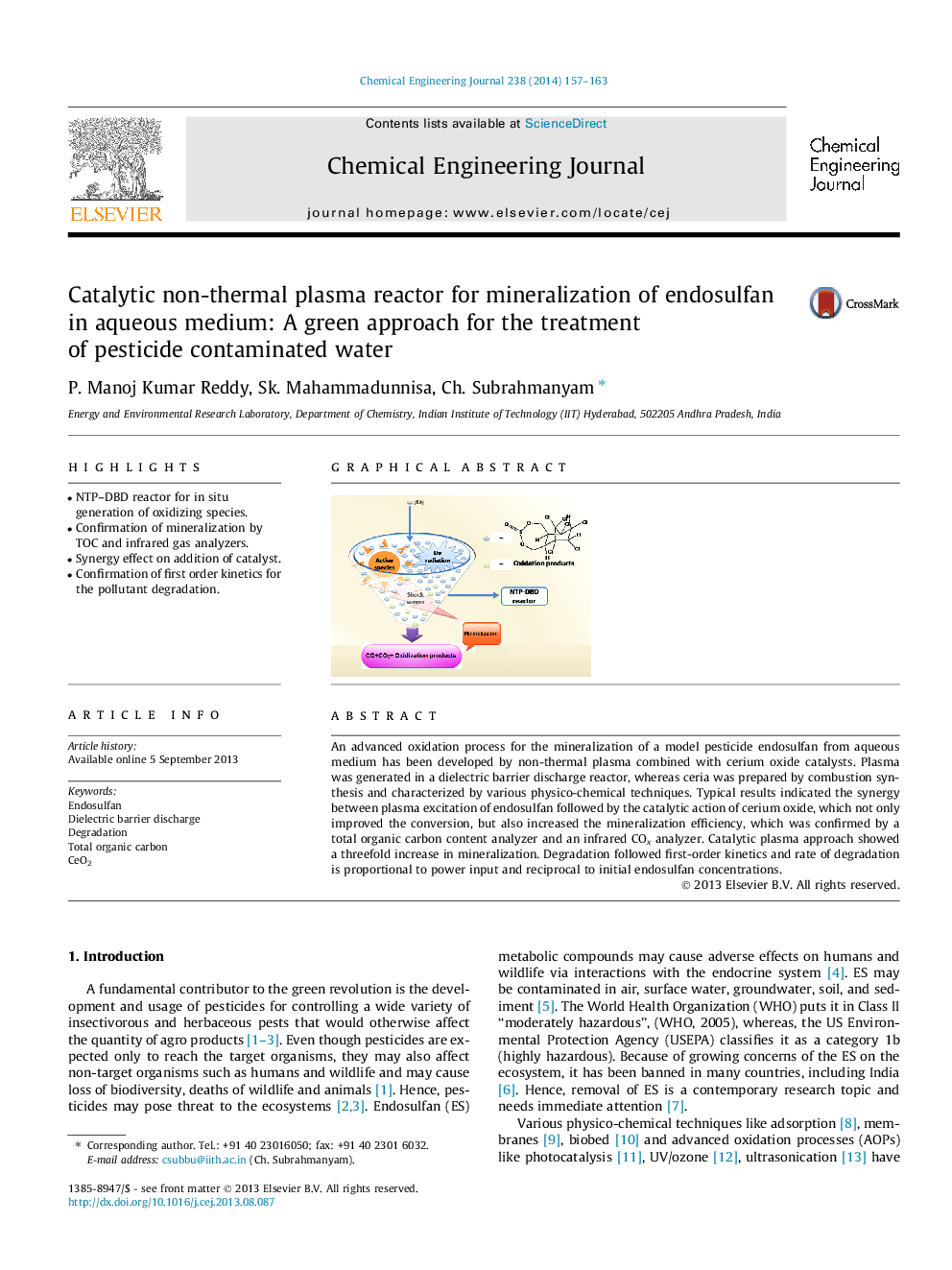| Article ID | Journal | Published Year | Pages | File Type |
|---|---|---|---|---|
| 148048 | Chemical Engineering Journal | 2014 | 7 Pages |
•NTP–DBD reactor for in situ generation of oxidizing species.•Confirmation of mineralization by TOC and infrared gas analyzers.•Synergy effect on addition of catalyst.•Confirmation of first order kinetics for the pollutant degradation.
An advanced oxidation process for the mineralization of a model pesticide endosulfan from aqueous medium has been developed by non-thermal plasma combined with cerium oxide catalysts. Plasma was generated in a dielectric barrier discharge reactor, whereas ceria was prepared by combustion synthesis and characterized by various physico-chemical techniques. Typical results indicated the synergy between plasma excitation of endosulfan followed by the catalytic action of cerium oxide, which not only improved the conversion, but also increased the mineralization efficiency, which was confirmed by a total organic carbon content analyzer and an infrared COx analyzer. Catalytic plasma approach showed a threefold increase in mineralization. Degradation followed first-order kinetics and rate of degradation is proportional to power input and reciprocal to initial endosulfan concentrations.
Graphical abstractFigure optionsDownload full-size imageDownload as PowerPoint slide
